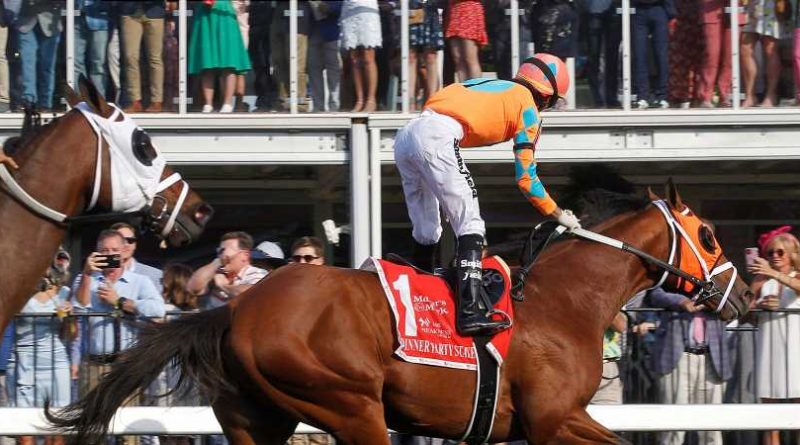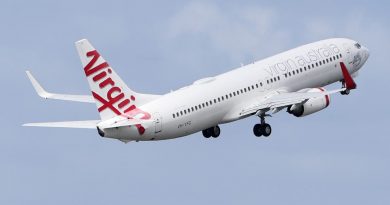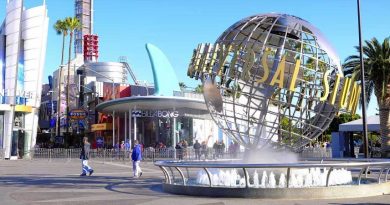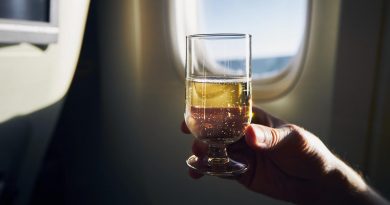I Went to the Preakness Horse Race During the Pandemic – Here's What It Was Like to Be Around 10,000 People
I was conflicted the moment I received the email invite. As the world slowly starts opening up, restrictions lift, and the indoor and outdoor activities we once took for granted get started up again, I knew it was only a matter of time before I would receive a hard-to-pass up invite to a large event, nevermind one of this size and caliber. But like many of my contemporaries, I also knew I would need to wrestle with the idea of it a bit first.
The invite in question: the Preakness Stakes, one of the most celebrated sporting events in North America with a 146-year-old history.
What is the Preakness Stakes?
Part of the Triple Crown, the Preakness is the middle event of the three, preceded by the Kentucky Derby and prior to Belmont Stakes. Each year, on the third Saturday in May, fans of thoroughbred horse racing — and those just looking to partake in a good spectacle — descend on Pimlico Race Course in Baltimore to watch it all go down.
The day is not just specific to races and gambling on the ponys, though. It's also filled with celebs — Diplo, Tyler Cameron, and Brian Poli-Dixon attended this year — and top-tier entertainment, with past musical acts including Post Malone, Lorde, Macklemore, Ryan Lewis, Sam Hunt, and Childish Gambino, amongst many others.
Still, I wrestled with the anxiety of going to my first big sporting event, committing just a few days before the CDC released their new guidance which says that fully vaccinated individuals — like myself — no longer need to wear masks in most indoor or outdoor settings.
Though it's a dignified horse race, and the ticket prices generally attract the well-heeled, I had seen photos in years past of this big Baltimore party weekend — masses of people huddled together, having a ball in a naive place we all once knew well prior to COVID-19. When I told a buddy I was attending, he kindly reminded me it was known for being a rowdier party, especially in the infield, affectionately dubbed "The Freakness" by college-aged kids who in past years would have one too many and attempt to run across lined up urinals as their peers chucked beer cans at them.
Though that specific tradition was curbed a bit even prior to the pandemic, it's still a good watch on YouTube, and whether they would be throwing beer cans or not, the thought of strangers in a crowd continued to feel both foreign and newly intriguing to me.
Due to the pandemic and best practices established by local and state government and health authorities, only 10,000 fans would be allowed in attendance this year compared to the usual crowd of over 120,000. After delaying and then running the 145th Preakness without spectators in October, just having the event at all was an important step towards reviving live sports and entertainment. "The team at 1/ST worked tirelessly to thoughtfully and safely plan for the enjoyment and safety of our guests, stakeholders, jockeys, and the community with COVID protocols in place," Belinda Stronach, chairman, CEO, and president of 1/ST, owners of the storied Pimlico Race Course, told me.
How did I assess my risk for attending a large event after the CDC’s updated guidance on masks?
Over the past year, like most pandemic-fatigued Americans, I've become more and more comfortable with the idea of dining al fresco, and since getting vaccinated, even dining indoors and being around larger groups of people without masks. I know there are technically still risks involved, but my vaccination has given me a lot more peace to go about with certain activities. Still, I'm in my 30s, relatively healthy, and have always been considered lower risk when it comes to COVID-19. You should assess your risk accordingly attending any event or gathering, even if you're vaccinated.
So, what was it like attending a large event after the CDC’s updated guidance on masks?
What struck me when I first arrived at the entry to The Preakness was that there was no staff waving a digital thermometer at me to take my temperature, an almost commonplace expectation over the past few months — especially at restaurants and gatherings of larger groups. Instead, friendly workers asked me to pass by a specific spot, and an infrared temperature camera was used to grab my ideal 98.6. The high-volume camera used was pretty non-invasive, and looked more like a CCTV camera with the explicit goal of scanning temperatures so guests could quickly usher themselves into the big event. The camera even blended into wrapped ivy, and I'd assume a lot of folks didn't even realize they were having their temperatures taken as they walked by.
As a next step, a friendly set of Preakness staffers told me that before entering, I would need to show proof of my vaccination, which luckily my husband and I both had saved as photos on our cell phones. Otherwise, we would have to scan a QR code to fill out a COVID-19 safety health questionnaire.
After that, I was in and I wouldn't turn back. While this year has inadvertently afforded me something I value dearly — personal space — I knew by passing the entry requirements I would again be breathing the rarified air of a lot of strangers… 10,000 of them to be exact.
My particular ticket to The Preakness offered me access to The Chalet, a hospitality suite with an outdoor viewing platform directly over the track that serves tasty food from a variety of stations, not to mention cocktails and other beverages. Preakness day is long, with the unwritten expectation that there will be lots of drinking involved. Luckily, The Chalet was well-equipped with live feed televisions of the races, and a private lawn area with blankets, seating, and other little comforts.
My immediate impression walking into the space did not surprise me. I realized within seconds that I would have to quickly get comfortable with just how many people were not wearing masks and heeding the CDC's relaxed guidance — presumably because they were all vaccinated. In fact, throughout The Preakness, I noticed there were very few people wearing masks. Sure, almost all of the servers and staff were required to wear them, similar to a restaurant, but the general vibe amongst guests was that the mask had quickly become an optional accessory.
For anyone handling food or drinks, plexiglass sheet partitions were the norm, and one thing I appreciated about the space was the ability to go outside and escape to the terrace to avoid the maskless indoor crowd if I felt things were getting too busy.
1/ST did their part to comply with protocols, even going above and beyond. Things were weirdly timed for the event anyway, with the announcement from the CDC coming just two days before the Preakness festivities began, and before further reactionary restrictions could be lifted as a consequence.
Still, guests took it upon themselves to relax mask rules, something I believe we'll see a lot more of in the coming months. Weary event-goers or travelers may want to consider this when they're evaluating future in-person events to attend.
For someone who lived through the early days of the pandemic up close and personal in the New York City area, I'll admit it was a bit jarring at first, but in an ever-shifting time of restrictions, it also felt right in the moment. I got some liquid courage by way of a Black-Eyed Susan, the official drink of Preakness, and slipped my mask off within a few minutes of being there as a welcome relief washed over me.
What put me at further ease to do so was when I started chatting to people around me, crafting my introduction with them by saying, "Isn't it great to be vaccinated and talking to strangers again?" Indeed, it was.
What are the innovative ways event holders are keeping guests safe during COVID-19?
Beyond their advice on masking, which you now know many didn't listen to, other noticeable changes at The Preakness were measures intended to keep guests safe in light of COVID-19. These included keeping ticketed areas socially distant and separate from each other and essentially creating pods of guests based on said ticket type. Organizers 1/ST also had a simple-to-use contactless wagering app for bets, 1/ST BET, which removed the need to approach anyone at a betting window, though you could do that in The Chalet in person if you chose to.
Once I got comfortable in my new surroundings and being sans mask, a fellow attendee turned to me and asked if I wanted to attend "the performance". Aside from some local outdoor music in the past year, seeing a performance by any musician would feel like a brand new experience, so I was instantly intrigued.
Of the 10,000 fans in attendance, 3,000 of them — mostly a younger, more jovial crowd — attended Preakness LIVE, the reimagined entertainment experience featuring a lineup of performances mainly by #ClubQuarantine DJ, D-Nice, as well as short-but-sweet main event performances by 2 Chainz and Major Lazer. The front rows were reserved exclusively for 200 first responders and frontline workers and guests viewed the show from private pods.
These pods were something I'd personally never seen in action before, but make a lot of sense for the current state of our in-limbo world. Each group of concert spectators was set up in a metal gated area six feet apart from each other. Friends, family, or other guests — roughly 10 per pod — could get up close to each other. This lent itself to the feeling of being in floor seats at a massive concert, nothing like I've seen in 14+ months. The energy was contagious as guests danced on chairs, also provided as part of the pod, and sang along loudly to their favorite tracks while exchanging smiles and even hugs.
With a little luck, and continued innovation from event leaders like 1/ST, it's my guess that you should expect to see a lot more of these larger events not only becoming more enjoyable come summertime, but go off without a hitch. And while it might seem like a mighty feat today, Stronach tells me that for Preakness 147, currently scheduled for 2022, they look forward to welcoming back all of their 120,000 fans.
Source: Read Full Article








